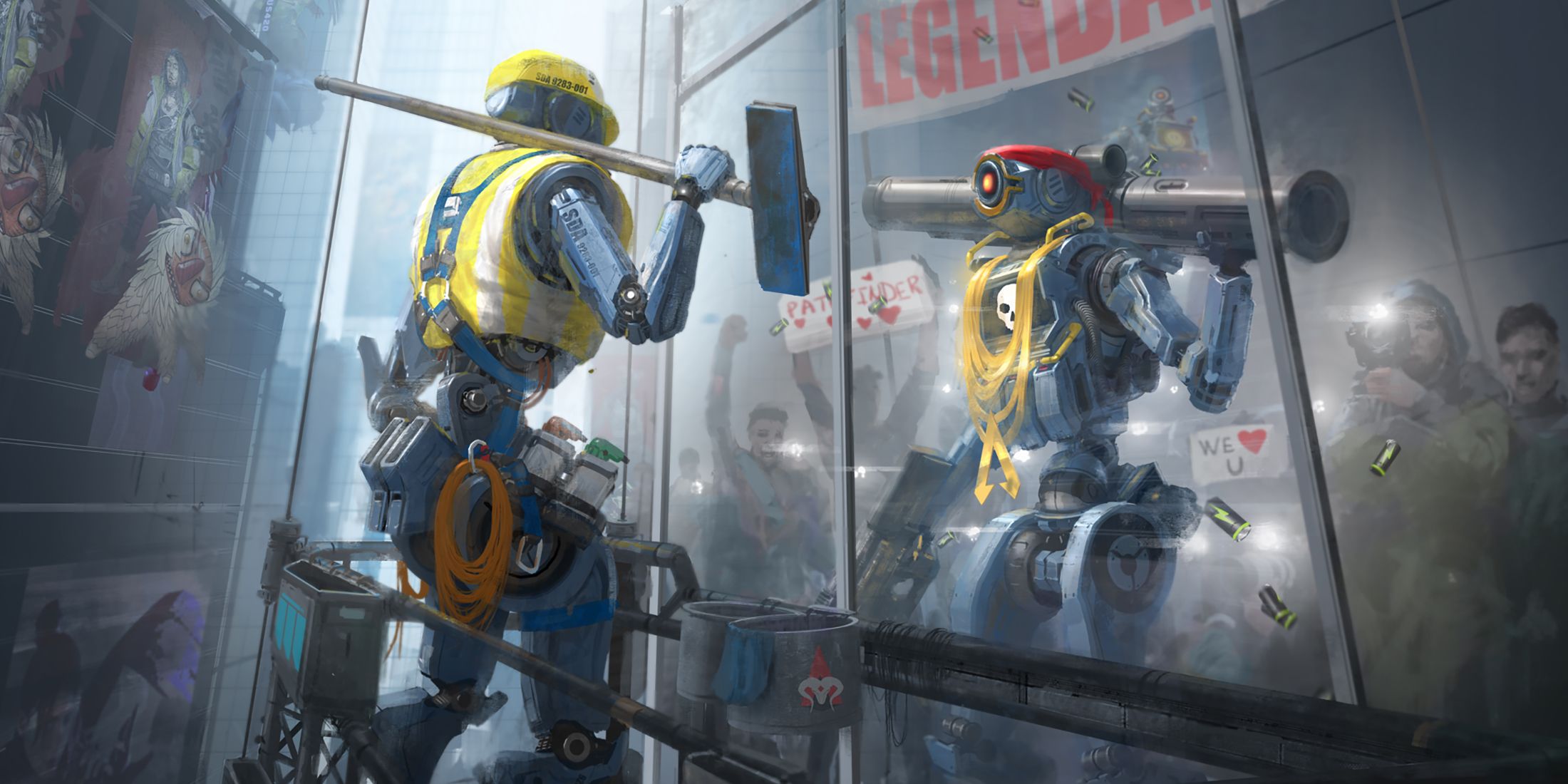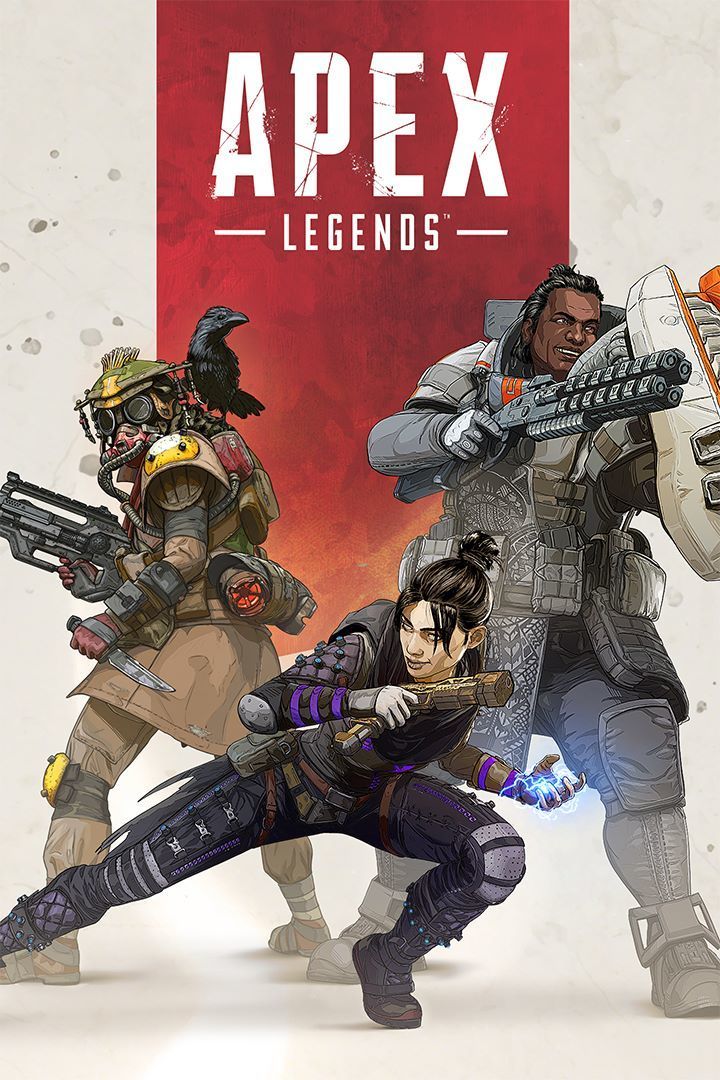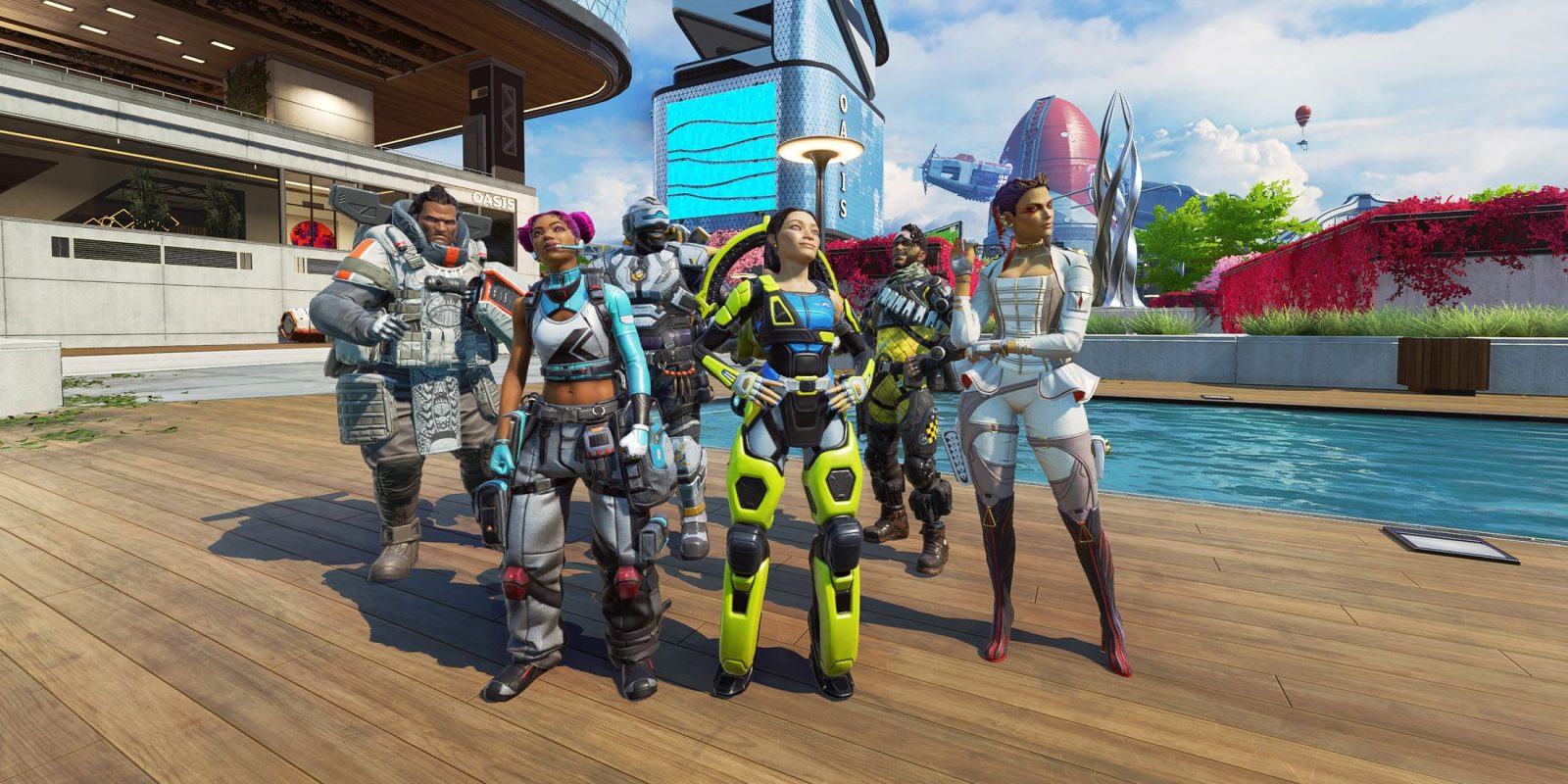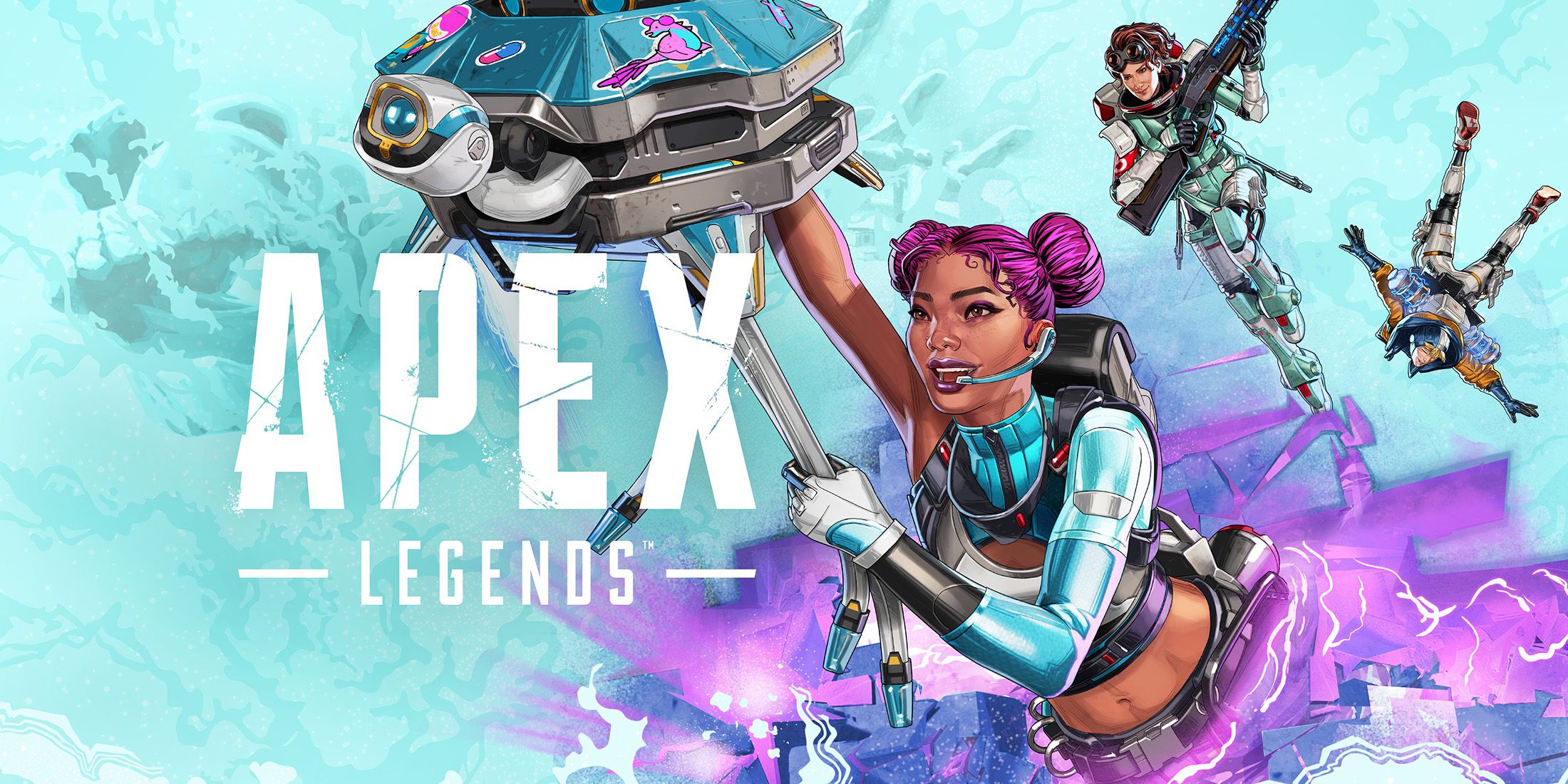Apex Legends season 23 might officially be known as “From The Rift,” but it internally has another name: the Season of Support. Not only is Apex Legends season 23 reworking Lifeline to bring her up to speed with the modern BR game, but the entire support class is getting…support, with more tweaks possibly on the way.
However, that’s just one focus. The Apex Legends team is, of course, looking back at season 22 and learning from it, introducing a new system known as Rift Relics, adjusting the weapon meta, and much more. To get more insight into these choices, Game Rant spoke with design director Evan Nikolich, lead BR designer Eric Canavese, lead legend designer Devan McGuire, legend designer Evan Funnell, and mode & events lead Mike Button, among others. The following transcript has been edited for clarity and brevity.
1:07

Related
EA CEO Comments on Whether Apex Legends 2 Could Happen
EA’s top executive drops some interesting comments on a potential follow-up to its popular battle royale game, Apex Legends.
Disrupting Apex Legends
Q: When I’ve spoken with some of you in the past, about Apex being five years old, almost six now, a lot of focus has been put on disrupting the game and trying new things. I was curious if you could talk about how season 23 plays into that?
Nikolich: Yeah, sure. The big thing is Lifeline’s rework: taking an OG legend from Apex and bringing her up to the combat medic fantasy that we feel she deserves. She was great at launch, she’s been good for almost six years now, but I think we can plus her up. You’re also seeing things like leaning into more transparency and competition, like with the Ranked changes, and putting a focus on that. We want to be the preeminent competitive BR and competitive game overall.
You’re seeing a lot of changes in terms of making our weapons better. Akimbos was a really disruptive add, and we took one of our quote, unquote “worst weapons” and brought it all the way to the top, which was great. We want to do more of that. I think a big part of having fun is learning, experimenting, and being challenged on other preconceived notions–within reason, right? We don’t want to buff things for the sake of buffing things. We want to do it in a way that makes you think and entices you to play. The worst thing we could do is make you think you have to play a certain way because something is just mathematically the best thing. We want to make sure you have expression, so it’s always a balance for sure.
Q: During the presentation, you talked about some of the key takeaways from Season 22 and how E-District has gotten a lot of love, but what’s the general biggest sort of feedback for the new map?
Nikolich: The biggest stuff in terms of positivity, I think, is how different it feels. It’s a very vertical map, and it’s a very different direction from everything else. We started work on E-District when I started a few years ago, and it was like, ‘How do we tell a different story through geometry?’ Story meaning player story, player experience.
That said, vertical maps are tough on new players, so there are things we have to do better in terms of getting players adjusted to that playspace. If you’re coming from World’s Edge or even Storm Point, then E-District is a bit jarring.
That said too, E-District got a lot of love from the pro community, and they feel like it’s comp-ready. Our goal is to eventually have all our maps competition ready for ALGS, so to hit it out of the gate, the first time we’ve done that since Storm Point, is super encouraging. With E-District, we made a map that was good for competition but also good for our core player base, where I feel Storm Point was really good for competition but not the regular player base. With our Season 19 update to Storm Point, it definitely got better for that regular player space.
Lifeline Revived
Q: Lifeline Revived is the second character to get a significant rework. Could you talk a bit about how reworking a character differs from making a brand new one?
Funnell: Yeah, the process of it is interesting. For us, reworks are intended to be something where we take a look at the roster. We have quite a few characters at this point, so we want to look back and see where they’re landing, to see if they need help to be brought up to the current state of Apex, and to give them more time in the sun if they need it. We wanted reworks to be something the team could work on in the background while working on new Legends, but the interesting thing is that the work involved in a rework and a new legend is pretty similar. It goes through a very similar process and the timeframe is fairly similar to a brand new character. It’s been a pretty fun process to try and take another look at these characters and see what it takes to bring them up to the fantasy that we want them to be.
McGuire: One inherent difference, I think, is that the character is already established in the world. There are people who play this character, who are fans of this character, and who have built strategies around this character. By reworking them, changing their abilities, we’re flipping that on its head. We could potentially take things away from people there, so we have to be very careful about what we do to that character to maintain their core fantasy, from a personality and archetypal standpoint. Adapting their abilities to something new means pulling things off the table and replacing them with something that should ultimately be better or give you more opportunities.
A lot of times, we’ll experiment with something going on where there’s a problem with the character that could qualify as a potential rework, but we’ll try something and it’s like, “Oh my gosh, no, that doesn’t fit the character’s theme at all.” We had a bunch of those scenarios with Lifeline right out of the gate, whereas with a new character, you’re molding them as you go. You have this core idea, know kind of what works, and can fit it into a nice little package. Then, you’re trying to round out that player expression.
With reworks, you have to maintain who that character is and what their playstyle needs to inspire and feel like. That is an entirely different challenge and problem than coming up with a brand new character who fits into Apex and has their own space. You have to be locked in with reworks on what your community wants, what the community needs, and how this character is going to evolve in positive ways that still hit the fantasy and create gameplay that is both healthy and positive.
Yeah, it sounds like working when you don’t have an exact box vs. a defined box.
McGuire: Yeah, a box that a lot of people care about, especially for Lifeline. There’s a ton of people who care about this character, so it was a very difficult thing to get right. She went through a lot of iterations, mostly on her Ultimate because that’s the biggest thing that’s changed wholesale, but her kit changed a lot to get to where it is today.
Funnell: Yeah, it’s a lot. It’s pretty different as well in terms of just reworks. Even with Revenant before, the motivations behind wanting to rework him were a little different because he was more of a low-picked character. A lot of his abilities hit the fantasy we were aiming for. Lifeline is a bit different because she does hit some elements of a combat medic fantasy, but not in all respects for modern Apex. Her pick rate is not really low, but we needed to catch her up. It’s more she just wasn’t keeping up with the current pace of what Apex has become, so we wanted to try to raise her up to that standard and ensure she remains a relevant character. It’s different motivations, looking to fit the same idea.
Rift Relics and Weapons
Q: In terms of the weapon meta, I noticed there are a lot of buffs. I’m sure this is not a common community question, but I was curious about what has led to so many weapons getting buffs this season?
Canavese: Buffs are fun. It’s honestly a lot more fun to play with a sandbox that’s like a rising tide. Things are getting stronger. Weapons that have not seen a lot of love in the past become viable, and it shakes the meta up. We’ve been doing this a long time and sometimes we do need to nerf stuff, but when From the Rift came around, we saw this opportunity where our top line is actually in a pretty good spot right now. Instead of bringing those down to force people to use the lower-used stuff, we saw it as an opportunity to sort of bring that bottom line up and encourage people to challenge some of those top weapons. We just wanted to try something a little bit different, not package a season full of nerfs, and go the other angle and provide more fun and excitement for some of these underused weapons.
Q: With the Rift Relics, could you talk a little bit about the weekly aspect and what has led to the creation of this new feature?
Button: Yeah, I think even going back to your first question, it’s part of the event team’s desire to get in line with this direction of disruption and playing a little bit with meta. The event team handles that less, right? That’s more the realm of the core team, so we maybe play more with mini-metas. When we talk about events, one key differentiator for what makes it an event as opposed to another feature of the game is that they are temporary, so we wanted to play more with novelty and power–to go even further afield and further outside the box than we are necessarily always comfortable doing outside events. That’s what really drove this weekly rotation. We don’t want them to overstay their welcome; we don’t want a whole half-season of the EPG-1, right? That is too much, but the launcher is super fun. Weekly events felt like the right way to introduce something like that, to get it in the hands of players–kind of on and off. You’ll see each week that things are going to be added and things will be removed in place of new things. To keep things exciting and interesting, throughout the whole season, is really the goal there.
Q: For the EPG-1, what do you think is the biggest difference between Titanfall’s and Apex Legends’ versions?
Button: I think the biggest difference for us, at least, is we’re not pulling it out and shooting at giant robots. This is a whole different game at the end of the day, so dialing in the numbers and trying to make it feel right, make it feel powerful is a different expression. We want players to want to get their hands on that thing, but there is a lot of time and effort put into balancing it, tons of playtesting. We’ve been playing with it on that edge of just being too powerful, so the team will be keeping an eye on it when it goes live.
If it’s feeling too disruptive, too broken, then the adjustments will be made quickly. I think, even just following suit with what Eric and his weapon team are doing in terms of making changes quickly, like we saw with the Mozambique, right? It’s not six months of OP Mozambique. We want to address things like that quickly because we want players to express themselves, to have a choice between the things they’re using. I do think the EPG-1 is going to be highly desirable when it’s live, but there’s a whole lot of other stuff coming with Rift Relics and core changes to the game that will compete for people’s attention.
Q: As a whole, has there been anything you’ve played in internal builds that you are just finally excited to see in the live game?
McGuire: I’m excited to see what people do with these Rift Relics going live. There’s a lot of really fun new gameplay potential that we’ve been playing with and experimenting with and seeing some of the skill expression that comes out of the crazy things that come out of these. I’m excited to see how that affects the game for the grand population across the season.
Button: Man, I appreciate it, Devin, because I was going to say Lifeline Revived. As a day one player who gravitates toward support, my friends are the high-skill point-and-click headshot bros I roll with, I really love the changes to Lifeline. I think it’s really cool how some of her abilities hearken back to her previous kit but in a whole new way. I love the mobility stuff because my general squad is always so far ahead of me, just blazing across the field. Now, I feel like I can probably keep up or at least I have a much better chance, so I’m excited for those changes when the season goes live.
Funnell: I’m right there with you. I’m biased, but the glide is really something I’m excited for people to try out. We’ve been tuning and messing with it for a very long time at this point, and I think we’ve gotten it to a point where it feels really good to the point where we’re constantly talking about missing it when we’re playing different characters or in the live game. It feels really great, and I’m excited to see how people use it.
Q: To wrap up, what do you think is the biggest goal of the “Season of Support”?
Nikolich: It really is to push supports to the top of the stack and get more people playing them. We don’t want to knock you off your movement legends, but we want you to think about your team composition more than anything. I think the thing is support doesn’t mean you have to be locked in place. The biggest thing we added to Lifeline, for me, is getting Doc to be movable. I can aim and shoot it at teammates and really help push the fight, and that’s what Apex is all about. We want supports that enhance the aggression that Apex is known for.

Battle Royale
First-Person Shooter
- Released
- February 4, 2019
- Publisher(s)
- Electronic Arts
- ESRB
- T for Teen: Blood, Violence
- OpenCritic Rating
- Strong
Source link












Leave a Reply